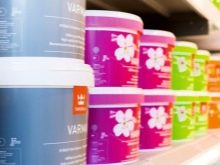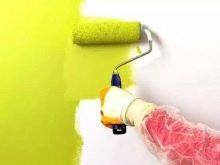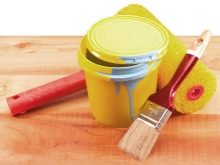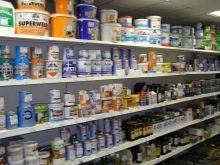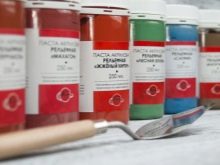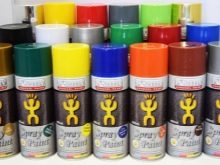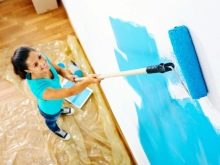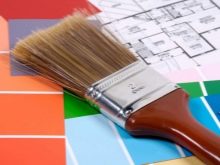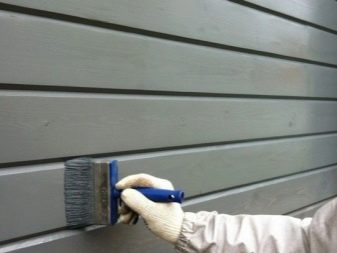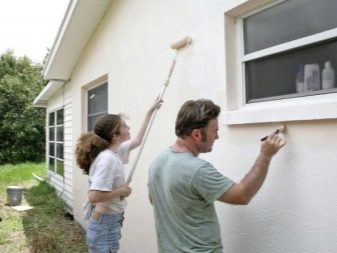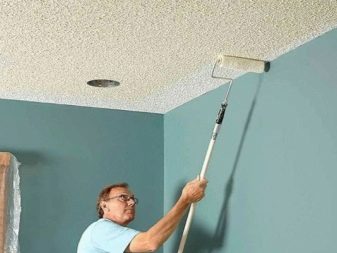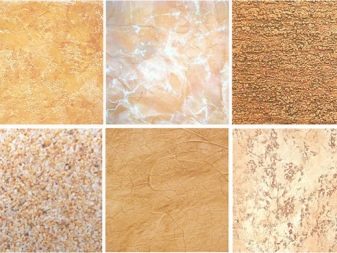Acrylic paint consumption per 1 m2 when painting in 2 layers
Before starting the repair, it is necessary to calculate how much paint and varnish may be required in the process. First, it is necessary to study the types of coatings and surfaces in order to correctly calculate how much substance will be needed per 1 m2. Usually, all the required information is indicated on the package, but the amount of material used always depends on the surface on which the paint is applied and on the types of enamel.
For each type of surface, you should select your respective type of coloring fluid. For example, facades are painted with compositions that are not afraid of water and temperature changes. During the painting of the ceiling using a water-based composition of acrylic.
Wooden and metal surfaces are coated with special enamel.Powder formulations are among the most effective.
If you do not want to buy paint in the store twice, you need to be able to correctly calculate how much coloring solution you will need for a certain area of the territory, and this often depends on its composition.
Acrylic paint features
During repairs, mixtures based on the addition of acrylic are often used. These compounds are perfect for easy wet cleaning of the room, they are endowed with antibacterial properties.
There are special advantages of this choice:
- Acrylic paint is non-toxic and safe to use.
- The mixture is of high quality.
- The term of operation fluctuates from 5 to 10 years.
- The composition dries very quickly.
- If you use the paint correctly, you can save a lot.
How to calculate the area
During the calculation of consumption, the quadrature of the surface to be painted is first considered. To do this, measure the distance between the ceiling and the floor, then calculate the perimeter. After this, the length and width should be multiplied together. Calculations should be made only in meters. During the measurement of the surface area of the wall, it is important to consider all the half-columns, protrusions and other irregularities.
After measured all the walls on which you want to apply paint. From the resulting number is subtracted the area of the door openings and windows.
Usually on packages of paints the amount of the mixture consumed per 1 square meter and the area that can be painted with one liter is indicated.
Universally recognized consumption rates
There is a rule that a per square meter should be about 170-200 g of composition. The rule remains valid if a smooth surface is coated with an acrylic paint, it is often used as a putty.
How to calculate
For internal and external decoration of the premises using water-dispersion mixtures based on acrylic. Because of this, such dyes do not lose their color, do not fade with a long stay in the sun and have a wide range of colors. If desired, you can achieve the desired tone using acrylic paste. These varieties give the surface a matte color.
Spray a mixture of acrylic should be applied to the area where they used paint and varnish from the same manufacturer. The maximum allowable temperature for work is +50 degrees.
When choosing a dye, it is important to take into account the advice indicated on the can.
If the package says that 100 liters of paint will be enough for 8 m2, then in reality this amount is only enough for 6-7 squares. These values depend on the surface texture, absorbent properties and other indicators.
The way in which the paint is applied also affects the amount of material required. If the painting is made with a roller, then the mixture will leave more than when painting with an airbrush. But if you use a brush, then you will need paint by 15-20% more than the amount indicated on the package.
Acrylic blends are preferably applied in two or three layers. The number of layers depends on the quality of the composition used. If it is of sufficient quality, then two times will be enough.
If you apply the coloring product on the plastered surface or cement, then you should additionally prime the treated area. Do not forget that for the walls used one type of acrylic paints, and for the ceiling - the other. This can be explained by the fact that the dye applied to the ceiling is subjected to less stress than the one that is applied to the walls.
Paint consumption for wallpaper
During the painting of non-woven wallpaper, the estimated paint consumption ranges from 200 to 250 grams. on 1 m2.To save the amount of paint used, you need to decide on the type of roller that is used for painting. For example, if the surface is smooth, then the pile of the roller should not be long, the most optimal length should not exceed 5 mm. During the painting of the textured area, it is preferable to use rollers, the length of the pile which is 10-25 cm.
Acrylic paint consumption during facade works
Paint consumption per square depends on the textural features. The average amount of the mixture used is approximately 180-200 g. During the work with plaster this number increases to 220-250 gr. In order to significantly save and high-quality paint the surface, you must pre-process the required area. To maintain a good looking surface, it is updated every few years.
The cost of textured acrylic paints
Acrylic enamels are often used during repairs. In this case, the paint consumption may be greater than usual. Often on the labels they write that 1-1.2 kg is required per square meter. But it is better to buy about 5% more paint in order to obtain a high-quality surface.
If you carry out internal work, the first layer of acrylic paint should be diluted with water to 5%. The second layer should be applied 4 hours after the first.
In order to reduce paint consumption, experts recommend working at normal air humidity and a temperature of about 20 degrees.
In general, it is very easy to calculate how much paint will be needed per square meter. It is only necessary to take into account the peculiarities of the surface that is painted, and the characteristics of the coloring mixture. Competent calculation of paint will help you save significant funds. Almost always, the manufacturer gives information about the product and tips on its use. It remains only to calculate the necessary parameters and get to work.
The process of painting the walls, see the following video.

